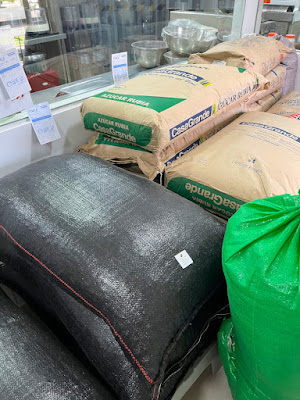Long time readers will recall that Julia and I took a tour of a chocolate factory in Belize in 2019. It isn't a coincidence that we toured one in Peru. First, I love chocolate. Second, there is a roasting process for cocoa beans (technically, cacoa seeds) that is somewhat similar to the roasting process for coffee.
When I roasted coffee commercially, I was approached by an investor in a Hawaii chocolate operation He wondered if there might be a way for me to roast cocoa beans in my Lodi shop. Meh, it wouldn't really be practical. The temperatures are much lower for roasting. And coffee beans and cacoa seeds don't mix very well on the same roasting machine in terms of odors and the clean-up.
But I'm still very interested in the process. The chocolate factory was around the corner from our hotel and offered a free self-tour. We feasted our eyes on the process but didn't buy anything here due to the "special" gringo prices. We later bought chocolate at the general market (more on that later).
 |
| Cacao Seeds and Sugar |
This photograph shows the seed grinder and the mixers for the cacao and sugar. Factory workers are shaping and packaging.
 |
| Roaster is upper right |
 |
| Final product |





2 comments:
Agree coffee beans and cocoa seeds might not mix well. Similarly, too much chocolate in a chocolate stout beer can ruin the taste. Chocolate coffee stouts are even harder to take. A good stout doesn't need added flavors.
I'm all for brewers using unusual ingredients if it makes the beer taste good. Unfortunately, I haven't tasted a coffee stout or coffee porter that I like. They all taste like stale coffee to me. Lately, I've been enjoying milk stout, which is simply the addition of lactose for creaminess and added mouthfeel. But they keep adding coffee, chocolate or peanut butter to milk stouts, which I don't want.
I've been drinking and recommend "The Poet," an oatmeal stout made by New Holland Brewing Company out of Michigan.
Post a Comment